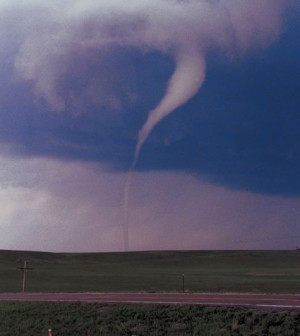- Skip Storing This Everyday Product in the Fridge Door
- Green Tea + B3 Pairing May Boost Brain Health
- Navigating Your Midlife Crisis: Embracing New Possibilities
- City Raccoons Showing Signs of Domestication
- Mapping the Exposome: Science Broadens Focus to Environmental Disease Triggers
- One Week Less on Social Media Linked to Better Mental Health
- Your Brain Changes in Stages as You Age, Study Finds
- Some Suicide Victims Show No Typical Warning Signs, Study Finds
- ByHeart Formula Faces Lawsuits After Babies Sickened With Botulism
- Switch to Vegan Diet Could Cut Your Greenhouse Gas Emissions in Half
Did El Nino Weather Give Zika a Boost?

The weather phenomenon called El Nino might have aided the explosive spread of the Zika virus throughout South America, a new study reports.
Climate patterns caused by El Nino could have increased reproduction rates in the mosquito species that carry the Zika virus and allowed those mosquitoes to live longer, researchers found.
“Temperature conditions were exceptionally conducive for mosquito-borne transmission of Zika virus over South America in 2015, related to the El Nino phenomenon superimposed on the global warming trend,” said lead author Cyril Caminade. He’s a research associate with the University of Liverpool Institute of Infection and Global Health in England.
Caminade and his colleagues concluded that the transmission risk for mosquito-borne illnesses in 2015 was the highest it’s been since 1950. They explained that incubation periods and mortality rates among mosquitoes were driven to record lows by warmer temperatures.
The periodic El Nino phenomenon is driven by unusually warm ocean temperatures in the Pacific Ocean near the equator, which serve to rearrange global weather patterns, according to the U.S. National Oceanic and Atmospheric Administration (NOAA).
A strong El Nino typically causes strong rainfall from the southern United States down through South America, NOAA says. The 2015-2016 El Nino was one of the strongest on record.
Heavy rains and warmer weather provide perfect breeding conditions for the Aedes aegypti and Aedes albopictus mosquitoes, which are most responsible for spreading the Zika virus, Caminade said.
Zika can cause devastating birth defects in babies exposed to the virus in the womb. One of these birth defects, microcephaly, can cause babies to be born with a smaller-than-normal head and an underdeveloped brain. Zika infections can also cause neurological complications, such as Guillain-Barre syndrome, in adults.
More than 80,000 people in 69 countries have been infected during an ongoing Zika outbreak that originated in Brazil in 2015.
For this report, the researchers combined estimates of mosquito populations with temperature-dependent factors known to influence the chances a mosquito will pass along a tropical disease. For example, warm temperatures can reduce the time it takes for a virus to mature within a mosquito so it can be passed along via the bug’s bite to another human.
The researchers concluded that the 2015 El Nino, together with climate warming, likely abetted the Zika outbreak in Latin America.
El Nino’s influence continues to be felt through the current winter weather, but Caminade expects its influence on Zika to be done for now.
“The situation in South America for the next mosquito season, from December to March, should be better as the population has already been exposed to Zika virus in 2015 and natural immunity should kick in,” Caminade said.
“There will still be risk of Zika virus transmission over the southeastern United States during summer 2017, Florida and Texas in particular, but this will be largely conditioned by the volume of infected travelers coming back or visiting these states,” he said. “The quality of public health services in the U.S. should prevent what we observed in Brazil in 2015.”
Dr. Amesh Adalja is a senior associate with the University of Pittsburgh’s UPMC Center for Health Security. He said the purported El Nino effect is “not surprising and reinforces the need to account for the intricacies of weather patterns when studying the trajectory and origins of infectious disease outbreaks.”
It is well-known that environmental conditions such as weather can have major impacts on the spread of various infectious diseases, Adalja continued. “Diseases like Zika, because of their reliance on mosquitoes for transmission, have an added element of environmental dependency derived from how mosquitoes are impacted,” he said.
But Michael Osterholm, director of the University of Minnesota’s Center for Infectious Disease Research and Policy, doubts that El Nino had as strong an effect as the researchers argue.
The Aedes aegypti mosquito, the prime carrier of Zika, doesn’t travel far in its life and most often breeds in small backyard puddles of water, Osterholm said.
Because of this, the planters, toys and other water-holding containers in people’s yards had a stronger effect than a global weather phenomenon in promoting Zika, he said.
“What really moves these mosquitoes over time has been all of the additional breeding sites from the nonbiodegradable aspect of the world,” Osterholm said.
The new study appears in the Dec. 19 issue of Proceedings of the National Academy of Sciences.
More information
For more on Zika, visit the World Health Organization.
This Q&A will tell you what you need to know about Zika.
Source: HealthDay
Copyright © 2025 HealthDay. All rights reserved.










